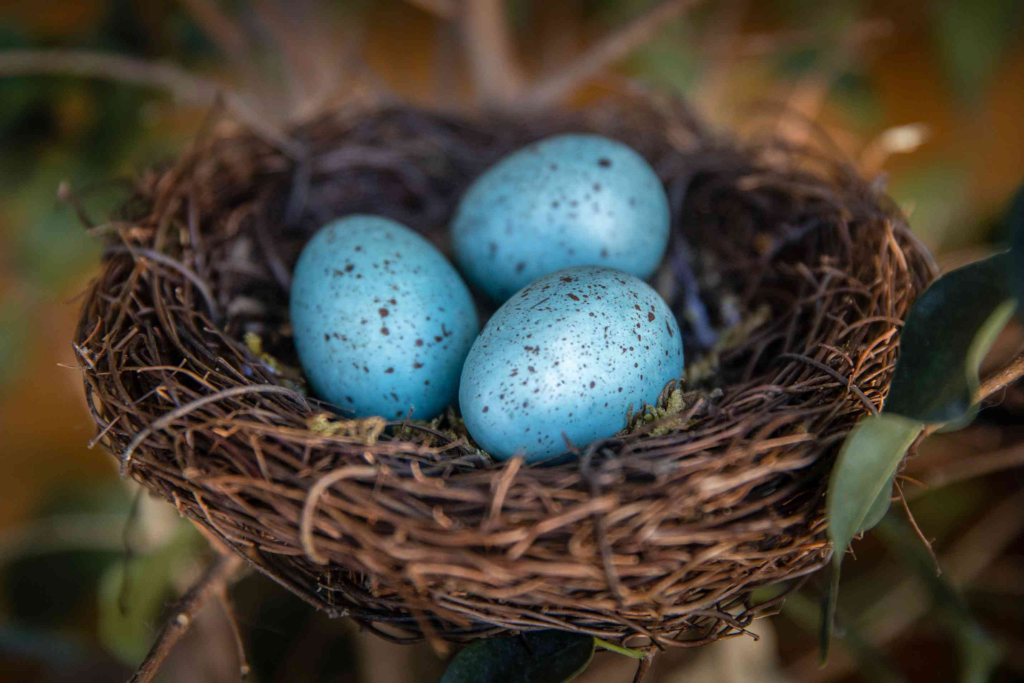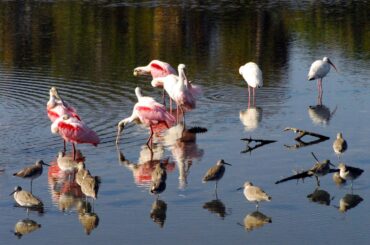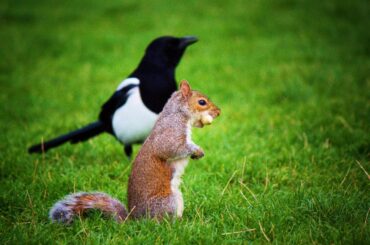Are you fascinated by birds’ secret world and unique abilities? Have you ever wondered if birds can shift their eggs between nests? This fascinating article explores avian nesting behavior to determine if birds have this incredible skill.
Those who enjoy watching birds in their natural habitat must know if these birds can move their eggs. This behavior can reveal bird life, survival methods, and the fascinating world of avian parenting. Investigate this intriguing question and discover our feathery friends’ secrets.
The Nesting Process
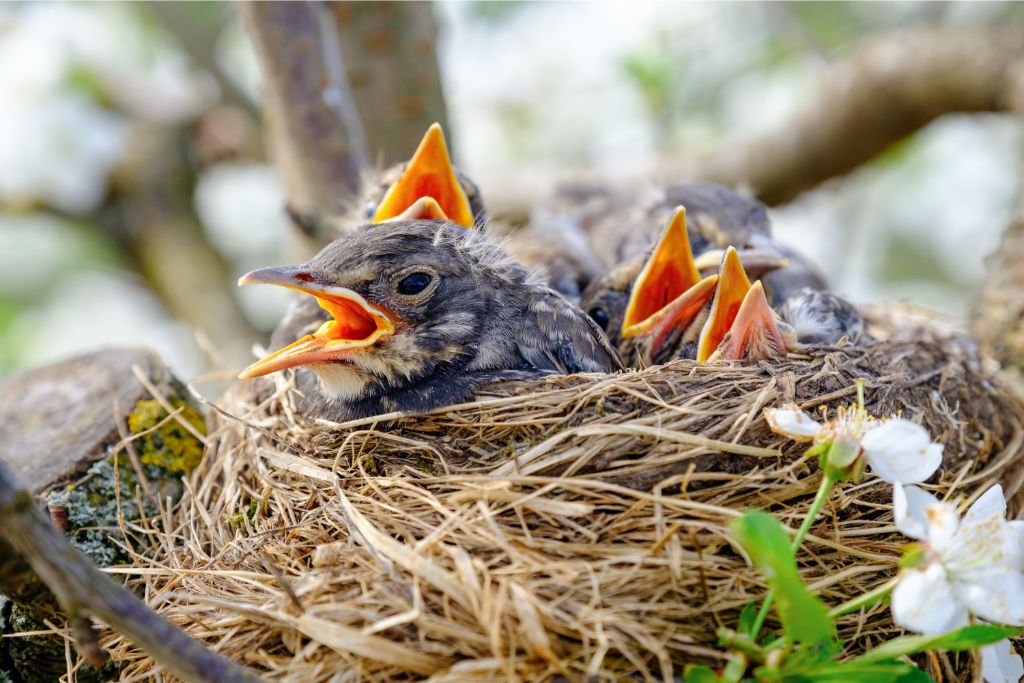
Birds are amazing creatures, and how they build their nests is truly fascinating! The nesting process is like their unique way of making a cozy home for their eggs and chicks.
How are they doing it? Birds first make nests in a safe, secluded place. Depending on the bird, this place can be in a tree, ledge, or ground.
Once they’ve chosen their spot and gathered their materials, birds create a solid base for the nest. They carefully weave and arrange twigs and sticks to form a solid foundation. Then they add softer stuff, like leaves, grass, or even their feathers to make it comfy.
The nest provides warmth and security, making it the perfect place for baby birds to grow and hatch. Nests are like the superhero homes of the bird world, keeping their little ones safe and sound!
Observations and Anecdotes
Bird behavior is genuinely fascinating to observe. These tiny birds tirelessly gather twigs, leaves, and even bits of string to construct their cozy home. Seeing how they communicate and cooperate to create a safe space for their eggs is terrific.
Bird behavior isn’t limited to sparrows and crows; many species exhibit unique traits. The brilliant blue jay stashes food in several places and remembers where it put it. Swans are graceful, but they may aggressively protect their nests and eggs. Birds’ intellect and diversity never cease to astonish us.
How Do Birds Move Their Eggs?
Birds have some fascinating ways to move their eggs when needed. One clever method they use is called “egg-rolling.”
Plovers and lapwings lay their eggs in shallow nests on the ground. To protect their eggs from predators or harsh weather, these birds gently nudge or roll them with their beaks. This helps them shift the eggs to a safer position in their nests, protecting their cargo.
Another exciting technique birds employ is “egg-carrying.” Some birds, like the Guira cuckoo, have specially adapted bills. They use their curved beaks to carry their eggs one by one. Adults take turns carrying eggs in shared nests to keep them warm and safe. Imagine an egg transport system built in!
For a more unique example, the male emu, a large flightless bird from Australia, plays a significant role in egg transport. After the female emu lays her eggs, the male emu incubates them. It sits on the eggs for about 8 weeks without eating or drinking much. It uses its soft, feathered belly to keep the eggs warm during this time. It’s an incredible adaptation that ensures the eggs develop properly until they hatch.
Reasons Behind Egg Movement
Eggs, the precious beginnings of new life for birds, often seem stationary in their nests. There are fascinating reasons behind why these eggs are sometimes moved. Here are some triggers that might cause eggs to be moved around.
- Protection from Predators: Birds often move their eggs to protect them from hungry predators like squirrels, snakes, and other animals that might want to eat them.
- Temperature Control: Eggs are like baby birds’ blankets. Moving them helps parents regulate the temperature, keeping the eggs warm in cold weather and cool in hot weather.
- Nest Maintenance: Sometimes, birds need to tidy up their nests. They might move eggs to fix the nest or remove old, broken shells to keep it clean and cozy.
- Changing Weather: Birds are bright. If they sense bad weather coming, like a big storm, they may move their eggs to a safer spot to shield them from strong winds and heavy rain.
- Avoiding Crowded Nests: When a bird’s nest gets too crowded with eggs, they might rearrange them to ensure all the eggs get equal attention and warmth.
- Habitat Changes: If their habitat changes due to construction or natural disasters, birds might move their eggs to find a safer place to raise their babies.
- Escape from Intruders: Birds might notice other curious birds or people getting too close to their nest. They move their eggs to a secret location to protect them.
- Egg Rotation: Like you flip your pillow to get comfortable, birds sometimes turn their eggs to ensure they develop correctly on all sides.
- Ensuring Survival: By moving their eggs, birds increase the chances of their little chicks hatching successfully, growing strong, and flying away one day.
Notable Bird Species
Birds are known for their diverse and intriguing behaviors regarding nesting. Some nesting birds move their eggs and have unique habits. This section will talk about some interesting birds that are recognized for their peculiar nesting habits.
Weaverbird
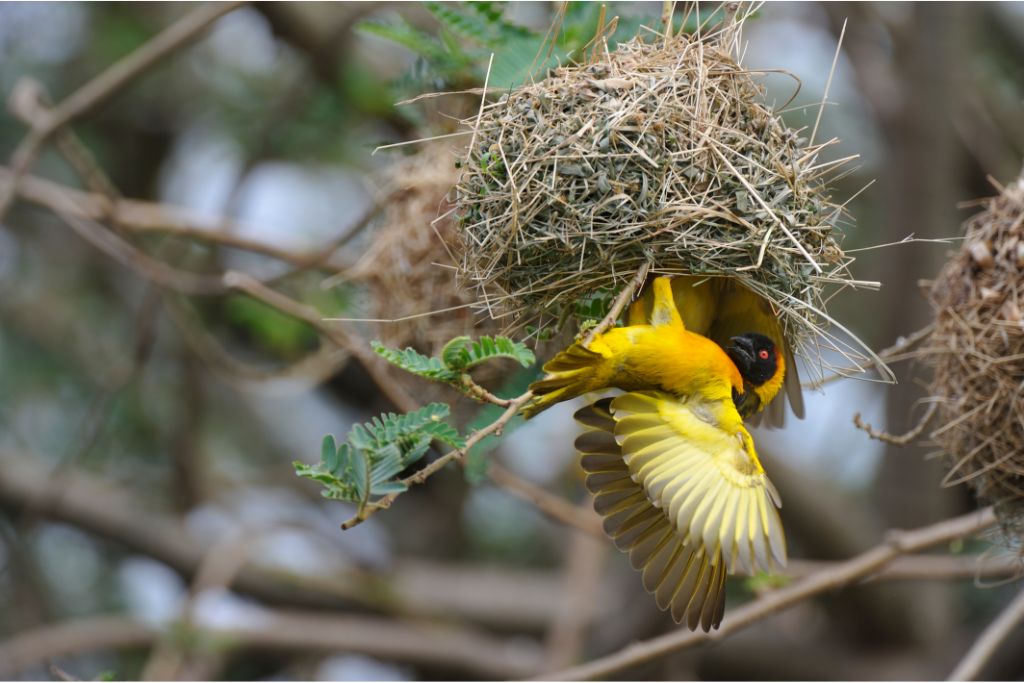
The weaverbird, known for its exceptional nest-weaving skills, hails from Africa. These small, colorful birds are expert architects, weaving intricate nests from grass, leaves, and other materials.
To move their eggs, weaverbirds carefully pick up each egg with their beaks. They do this gently to avoid damaging the fragile eggs. These birds have a good grip on the eggs, ensuring they don’t drop them during transport.
Their nests are even more remarkable because they’re designed to hang from the ends of tree branches, away from predators’ reach. The weaverbird’s craftsmanship and strategic nesting techniques help safeguard their eggs from potential threats.
Cuckoo

Cuckoos have developed a fascinating adaptation for ensuring their eggs end up in the nests of other bird species. After studying their surroundings, the female cuckoo waits for the host bird to leave its nest. She then swiftly lays her egg in the host’s nest, often within a matter of seconds.
To achieve this deception, cuckoos have evolved eggs that closely resemble the host bird’s eggs. This mimicry is so convincing that host parents are typically unable to distinguish the foreign egg from their own.
Common Eider
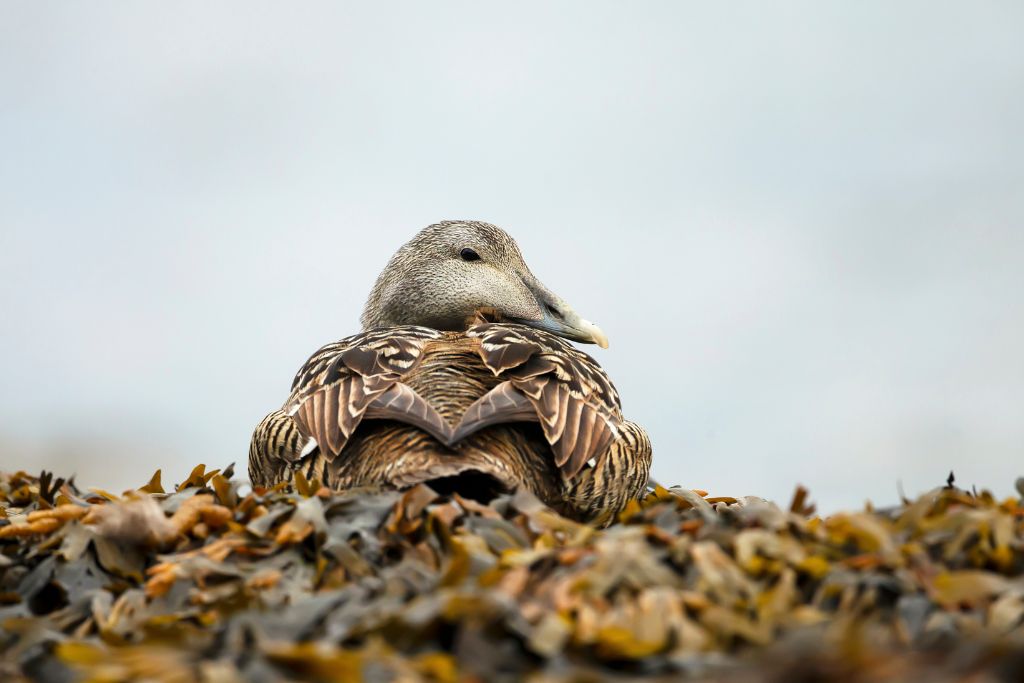
The common eider is a big sea duck that lives in the northern parts of the world. These ducks build their nests near the water, often on islands. But what’s really cool is how they protect their eggs!
When a dangerous animal comes near their nest, like a fox or a big bird, the mommy duck does something very smart. She takes her eggs and moves them to a safer place. Sometimes, she even puts them in another bird’s nest nearby! This way, the babies inside the eggs stay safe from harm.
Myths and Misconceptions
Birds and their eggs have always fascinated us with their incredible abilities and adaptations. There are some myths and misconceptions about how bird eggs move that need to be set straight. Explore these misconceptions and provide clear evidence to debunk them.
Bird Eggs Roll on Their Own
Unlike popular belief, birds do not roll alone. They are not like tiny balls that can move by themselves. Instead, birds carefully place their eggs in nests and use their beaks and bodies to adjust their positions. This helps keep the eggs safe and warm.
Eggs Hatch When They Roll
Another common misconception is that eggs hatch when they roll around in the nest. In reality, egg movement does not determine when they hatch. The mother bird keeps the eggs warm by sitting on them, and the heat from her body helps the chicks develop inside the eggs. Rolling eggs don’t affect hatching time.
Eggs Need Constant Turning
Some believe bird eggs must be constantly turned to develop correctly. Not all bird species do this. Chickens benefit from having their eggs rotated often, but many others do not. Nature has designed each bird species with specific incubation needs, so not all eggs need constant turning.
Final Thoughts
Each bird species has its own manner of protecting its young, from relocating eggs to building predator-proof nests. Admire these intricate and intriguing creatures. Discover the unfathomable wonders of birds by seeing them in their natural settings. Discovery, thrill, and nature’s beauty await on this voyage.
Birds, with their remarkable behaviors and unique adaptations, invite us into a world of wonder and complexity. Their nests, made with twigs and leaves, serve as warm, secure homes for their precious eggs, highlighting the incredible diversity of avian life.
Do Birds Sit on Their Eggs All the Time?
No, birds do not sit on their eggs all the time. They periodically incubate the eggs to keep them warm, but they also leave the nest to forage for food and take short breaks.
Do Birds Sit on Eggs While They Hatch?
Yes, to warm their eggs and develop their embryos, birds sit on them while they hatch.
Can Birds Move Their Eggs to a New Nest?
Yes, some birds are capable of moving their eggs to a new nest. This behavior is observed in various bird species, and it’s often done for a variety of reasons.

